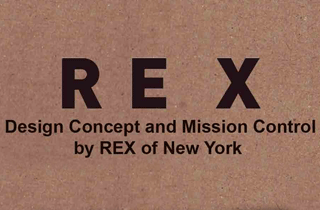In a few days from now (March 28, 2011) the Pritzker Prize Committee will announce the recipient of the 2011 prize. In anticipation of this momentous event, I have prepared a special note about the award.
If you are a starchitect with serious credentials working outside of the Americas, Europe or Japan and you are anxiously just sitting by the phone waiting for the Pritzker people to call you, first of all relax. I am about to show you why you should.
The Pritzker’s self-defined purpose is summed up in the following statement:
"To honor a living architect whose built work demonstrates a combination of those qualities of talent, vision and commitment, which has produced consistent and significant contributions to humanity and the built environment through the art of architecture"
I will first take issue with the underlined phrase significant contributions to humanity as significant is a relative word here: what is significant here is based on what is significant to a small group of like minded individuals in the upper echelon of the western world.
Contributions to humanity? how has the buildings of the past laureates contributed to humanity? Humanity? Okay maybe I have the wrong idea of what humanity is. Lets consult the dictionary.
Maybe, they meant “the humanities” as defined below:
The prize is awarded irrespective of nationality, race, creed, or ideology. Nominations are accepted internationally from persons from diverse fields who have a knowledge of and interest in advancing great architecture.
If the prize is given irrespective of nationality, race, creed, or ideology why does the make-up of recipients not reflect that?
See Charts below:
If you are a starchitect with serious credentials working outside of the Americas, Europe or Japan and you are anxiously just sitting by the phone waiting for the Pritzker people to call you, first of all relax. I am about to show you why you should.
The Pritzker’s self-defined purpose is summed up in the following statement:
"To honor a living architect whose built work demonstrates a combination of those qualities of talent, vision and commitment, which has produced consistent and significant contributions to humanity and the built environment through the art of architecture"
I will first take issue with the underlined phrase significant contributions to humanity as significant is a relative word here: what is significant here is based on what is significant to a small group of like minded individuals in the upper echelon of the western world.
Contributions to humanity? how has the buildings of the past laureates contributed to humanity? Humanity? Okay maybe I have the wrong idea of what humanity is. Lets consult the dictionary.
- all human beings collectively; the human race; humankind. [nope, can’t be that, this prize is certainly not considering all humanity. Just the western world me thinks]
- the quality or condition of being human; human nature. [not this either]
- the quality of being humane; kindness; benevolence. [okay, okay, maybe Norman Foster did it as seen here, but what about the rest? If this were the case, wouldn't have someone like Cameron Sinclear been on the laureate list a long time ago?]
Maybe, they meant “the humanities” as defined below:
literature, philosophy, art, etc., as distinguished from the natural sciences.
the study of literature, philosophy, art, etc.
The prize is awarded irrespective of nationality, race, creed, or ideology. Nominations are accepted internationally from persons from diverse fields who have a knowledge of and interest in advancing great architecture.
If the prize is given irrespective of nationality, race, creed, or ideology why does the make-up of recipients not reflect that?
- 73% Caucasian?
- 17% Japanese?
- all the other races combined 9%?
See Charts below:
 |
Though they did not mention gender its interesting to look at the gender break down as well: |
 |
| Age was not mentioned but also an interesting perimeter, the average age is 63: |
 |
| Regardless of ideology?, well unless you are responding or relating to modernism in some way, you are not getting the Pritzker. |
If nominations are accepted internationally from persons from diverse fields then I would imagine that the nomination pool would reflect that as well. If the nomination pool is wide and diverse and the results are homogeneous, then what does this say about the jury?
Well don't just make cruel and baseless assumptions. Lets take a look.
The independent jury of experts ranges from five to nine members. Jury members serve for multiple years to assure a balance between past and new members and are entrusted with selecting the laureate each year. No members of the Pritzker family or outside observers are present during jury deliberations which usually take place during the first months of the calendar year. The jury members are recognized professionals in their own fields of architecture, business, education, publishing, and culture.
Combining the 9 current members together with all the past members as listed on their website to date: March 2011, the jury make-up is as follows:
- 88.2% are Caucasian and male
- 11% are Japanese-Asian (all Japanese-Asian members were male as well)
- 11.8% were female
- To be fair, there was one non-Japanese Asian [Le Corbusier’s former apprentice in India Balkrishna Doshi], and he accounted for 2.9%
maybe a more accurate mission statement would have been
"a living architect, preferably a Caucasian or Japanese male, whose built work relates to modernism, demonstrates a combination of those qualities of talent, vision commitment, which has produced consistent
Otherwise, they would be statistically saying that South Asia, the Middle-East, or Africa have not produced any architects that demonstrate the qualities of talent, vision and commitment in the past 32 years.
With the exception of I.M. Pei, no architect outside of the Americas, Europe or Japan have produced consistent and significant contributions to humanity and the built environment through the art of architecture?
Is that so?
Really?
Lets break it down by country:
 |
| God Bless America! |
By Region:
 |
| Viva Europa! |
The official ceremony granting the award takes place every year, usually in May, at an architecturally significant site throughout the world. The choice of location of the ceremony reinforces the importance of the built environment while providing a unique setting for the ceremony. The presentation ceremonies move around the world each year, paying homage to the architecture of other eras and/or works by previous laureates of the prize. As the ceremony locations are usually chosen each year before the laureate is selected, there is no intended connection between the two.
This is a map of the cities that have hosted the ceremonies so far
Here are the percentages:
- 54.5% in North America
- 33.3% in Europe
- 6.1% in the Middle-East
- 3% in Central America
- 3% in North East Asia
Statistically speaking the committee has yet to find an architecturally significant site in the following regions of the world:
- Africa
- South-Asia : Indonesia, India, the Koreas, etc
- Central/Western-Asia: China
- Australia
Other gaping disproportionalities:
- only one architecturally significant site in all of South America
- 6 in Washington DC and 5 in Chicago alone
Trends:
Although I can not say with all certainty, the trend suggests that initially the plan was to have the ceremony in Washington DC, but after three years it started to move around within the borders of the United States. In 1986, for the first time the venue was hosted abroad in London, and a few years after that a loose pattern started to develop whereby the venue is rotated between the US and Europe. Last year, the venue was hosted in New York, so there is a reasonably good chance the next venue will be somewhere in Europe or another location abroad.
My Predictions:
This week we are most likely to see a caucasian male architect win the prize. He will most likely be an European, around the age of 62.97. His work will most likely have been strongly influenced by modernism, and he will most likely be presented the award somewhere on the European continent.
NOTES ON BECOMING A FAMOUS ARCHITECT
Liberating Minds Since August 2007
RELATED NOTES:




























































12 comments:
There is a small error in your statistics- Apart from Balakrishna Doshi, Charles Correa (another famous Indian architect) has also been on the jury for quite a few years. Doesn't make much difference to the conclusions you've drawn though..
I'd like to point out other similarities regarding the previous honoraries- 32 of the 36 of them had built at-least one Museum before winning the prize (Mayne, Hadid, Utzon and Barragan had not..)
Also- all but three winners (Bunshaft, Meyer and Roche) had published books before they won the prize.
The museum buildings are public buildings, usually made after choosing the architect on the basis of a competition.. They are expected to be sculptural, and functional requirements can be met in many creative ways.. Probably that explains the first similarity.
Lastly- I had done a survey, on Google trends data- analyzing search volumes of many architects.. Some interesting, although expected, observations there.. Hadid tops, followed by Piano, Gehry, Foster and then Nouvel..
Nice article.. I'd done a dissertation this year on the Pritzker Prize.. Thank you for keeping up this blog- its very well written.. helped me a lot while i was writing my dissert :)
Hi Abhiram, thanks for the corrections, and thanks for the follow up information. I had fun gathering all the research info for this note. As I was working on it I found some more correlations and data that I just could not fit in this time around. I also, had some other questions that I wanted to answer that i just could not find the time to research. So a second part is definitely in order.
Cheers
Conrad
Couldn't do any better with your prediction!
Souto de Moura is only 3 years off the age average...
@ Anthony, true. The last thing I am wondering about is where the award ceremony will be.
Has anyone heard anything?
A friend of mine just gave me the address of your blog. This is the first post I read and I quite like it. It has a lot of evidence for the point it is trying to make. I am looking forward to read some more posts. Keep them up :)
Cheers
In an interview, Souto Moura said the cerimony will in the White House, Washington D.C.
Just another note, Switzerland has 2 (or 3), not 1 (H&deM and Zumthor).
Conrad - Michael Sorkin did a similar statistical analysis of the Pritzker Prize in "Perspecta 37: Famous." Have you seen it?
I will sound ageist, but we need to encourage architects to retire at a respectable age, closer to 55 than 99 (Philip Johnson) and thus give old ideologies the opportunity they need, to become history. And none of this serving as Pritzker prize judges after retirement. It's bad for you backs. If I may offer a brief piece that I wrote on silly old codgers: http://behoovingmoving.livejournal.com/79487.html
Hey Thanks for the comments everyone.
@ Bashar, thanks its good to hear.
@ paulomoreira, thanks as well, I had put 2 down for Switzerland because I was counting prizes/year as opposed to the number, so it could be 3 as well (depending on how you look at it)
@ John, I haven't seen it but I will take a look. Thanks for the tip.
@ behoovingmoving, nice piece, thanks for sharing
love your blogger so much!
i think what you summarised about Pritzker Prize are all right, except the conclusion is not the reason. Architecture is very subjective, beside its functional needs and (sustainability,hot topic nowdays), it's hard to rate which architecture is better than the rest. It is even harder to rate which architect is better than the rest?
It doesn't mean Souto didn't deserve it. The Pritzker Jury has been getting better starting with their pick of Souto, not starting with their pick of Wang Shu like you make it seem in your blog. It's not like Wang Shu was unknown outside of China before he won the Pritzker and it's not like he doesn't engage in a branding campaign that's just like Zumthor's (your favorite starchitect of them all). You can't just sit back and pretend like the choice of Souto de Moura wasn't a surprise. He fits your statistics but you were probably thinking of Dominique Perrault, not Eduardo. Just admit that Souto was a worthy laureate and that you were pleasantly surprised.
Actually I did say that (read the bottom half of note 81):
http://famousarchitect.blogspot.no/2012/02/82-little-pritzker-committee-that.html
Firstly, they are doing something that in my view for the first time genuinely contributes to humanity in some way. Wang Shu and Lu Wenyu’s work demonstrates a sensitivity to their local traditions and a deliberate resistance to China’s blatant lack of regard for its own architectural heritage. By giving them the spotlight, the committee has made them in some way an example for other architects to follow. Perhaps this attention could bring a focus on what they are doing to the broader architecture and building industry in China. Perhaps it give some umph to those architects and developers in China who would like to go in that direction but thought they were alone. Perhaps it may put a question mark behind China’s thirst for the new and disdain for the old. It may or it may not but it is worth a try.
You see little Pritzker Committee I knew you had it in you. I knew there was an ounce humanity and substance in you. Last year I implored you to take a Lesson from Brad & Angelena and in your own way you did. You went a little outside your comfort zone by choosing someone in Asia outside of Japan. That’s a little step in my book but a big step for you non-the-less, but that’s how we all start. No?
You also chose to cut down on the age limit. Instead of a European Caucasian architect around the age of 62.97, you went with an Asian male at the ripe young age of 48. Well don’t hurt yourself. I know that must have been quite a challenge but you did it. That’s what counts.
Post a Comment